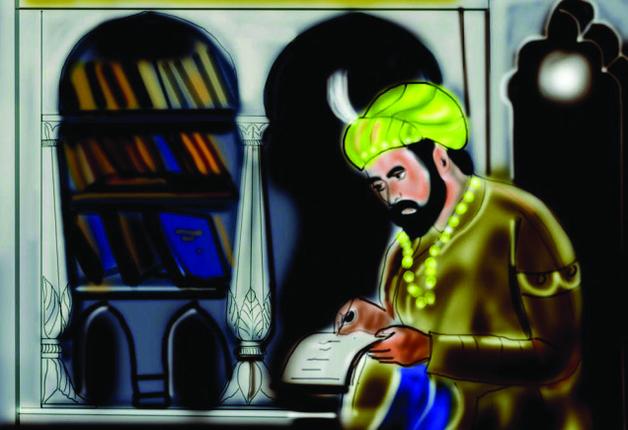The Mughal era books need to be preserved for posterity
The library of Dara Shikoh, near Chakkipat on the Yamuna’s right bank in Agra, is now a municipal office and its vicinity boasts an akhara. The books housed in the library or most of them, were brought to Delhi when Shah Jahan moved his capital to it and wanted the heir apparent Dara to stay by his side lest any harm befell him if he was appointed governor of some province (subha), like his brothers Aurangzab, Shuja and Murad. The library existed in the Kashmere Gate area, later becoming a polytechnic institute, another library behind the Jama Masjid, became a girls’ school. But the question is what happened to most of the books? Quite a few of them were destroyed in 1857 by the British, bent on revenge. Some others fell into private hands and were sold as “raddi” during the upheaval of 1947 by those going away as refugees to Pakistan. It’s worth noting that the books in the library of Prof Ahmed Ali, author of “Twilight in Delhi”, in Kutcha Pandit were sold one by one by a servant who had stayed behind and was reduced to penury after the professor opted to migrate to Karachi.
Some books of the Mughal era may be found in the National Library, in the British Museum Library in London and in the U.S. Congress Library. Besides some others were taken away to Pakistan by migrants. A few of those books are with the old residents of Delhi, Lucknow, Hyderabad and Agra, like the now disintegrated library of Nawab Faiyaz Khan, but 75 per cent of them are lost forever. It was something like the loss of Greek, Arabian and Persian masterpieces when the libraries in Athens and Alexandria were burnt during wars and by Mongol and Han hordes and vandalism by fiercely bigoted Arab and Turkish soldiers fired by the zeal to destroy all vestiges of the “idolatrous ages” of the Middle East. Such destruction also took place during the medieval Crusades and earlier by Attila and Hannibal. The Emathian Conqueror (Alexander) may have spread the house of Pindars but little else.
In a study on medieval libraries, written in 1970, father had this to say:
“The Sultans of Delhi and their nobles, who preceded the Mughals, had rich literary tastes and established a large number of public and private libraries. Jalaluddin Khilji founded the Imperial Library in Delhi and appointed Amir Khusrau its librarian. But it was Babar who really did augment the Delhi library.
“Humayun, inherited the legacy and added to the library seven halls, each named after a planet. He was so fond of books that he carried them to the battlefields. On one such occasion in fact he lost several rare ones. At Agra, he raised a set of magnificent buildings called Khanna-i-Tilism (house of magic), the first floor of which housed the library. Towards the end of his adventurous life he converted the pleasure house of Sher Shah in Delhi’s Purana Quila into a library.
“Akbar, although illiterate, turned out to be the greatest patron of art and translation of books, for each of which he maintained a separate cell. The biggest of his several libraries was the Imperial Library in Agra Fort. According to Abul Fazl, the library was divided into several parts. Some of the books were even kept inside the harem.
“Experienced people bring them daily and read them before His Majesty who hears (sic) every book from beginning to end,” he wrote.
Akbar had books brought from distant places and also encouraged scholars to write treatises, calligraphists to copy them and painters to illustrate them. He bought a richly illustrated version of the manuscript of Razm-Nama (the Mahabharata translated into Persian) for £40,000. “There were more than 24,000 books in the Imperial Library alone and they kept increasing. Fazl’s collection of 4,300 manuscripts was added to the library and the library of Itimad Khan was acquired after the conquest of Gujarat.”
Jahangir was a great lover of art, with an avid interest in old tomes. Shah Jahan had a godly collection of books. His son Dara, however, was more studious and collected books on poetry, Sufism and mythology, including Hindu scriptures. Aurangzeb’s books were mostly religious ones. The latter Mughals did not evince much interest in books. Bahadur Shah Zafar was however a lover of learning, being a poet himself. The disintegration of Mughal libraries took place during the First War of Independence and the upheavals of Gardi-ka-Waqt but after that English scholars made good use of them, like William Fraser.
It would be worthwhile if the Union Human Resource Ministry and Archaeology Survey of India acquire Mughal era literature from all known sources and establish a Central Mughal Library in the near-deserted Purana Quila, bigger than the partially revived one of Dara Shikoh.
source: http://www.thehindu.com / The Hindu / Home> Features> MetroPlus / February 23rd, 2015









